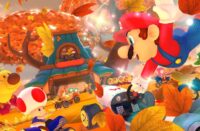Living in the cosmos isn’t a piece of cake. Prolonged existence in the weightless environment of space can lead to a variety of health challenges, such as space sickness, vision impairment, and fluid accumulation in the upper body. While the zero-gravity environment enables astronauts to float, rotate, and spin in the air, it also has a downside. The lack of gravitational force can cause the body’s muscles to weaken due to lack of regular use.
To combat this muscle and bone mass reduction, astronauts need to engage in physical exercise for at least an hour daily. One of the main objectives of the International Space Station’s work is to conduct scientific research aimed at preserving human health in space. Numerous experiments are regularly conducted on the space station to evaluate health and wellbeing in the space environment.
Part of this research involves developing non-intrusive health monitoring systems for astronauts. The Canadian Space Agency has developed a Bio-Monitor system, a smart shirt equipped with embedded sensors that can track vital signs such as pulse, blood pressure, breathing rate, and skin temperature. It also includes a headband that monitors blood oxygen levels. This system is currently being tested on the International Space Station, with the aim of not only benefiting astronauts but also having potential applications in medical fields, sports research, and telemedicine on Earth.
The European Space Agency is also contributing to this research with a tiny device called Myotones, designed to measure muscle stiffness. This device can be used to assess the effectiveness of astronaut exercise programs by ensuring that no crucial muscles are overlooked and potentially deteriorating.
However, physical health is not the only concern for astronauts. Cognitive function and sensory perception can also be affected by spaceflight. Systems to monitor these aspects include tests for fine motor control, simulated flying or driving challenges. These tests assess an individual’s ability to identify obstacles, respond appropriately, and multitask. Such simulated tasks could also improve astronauts’ performance in actual tasks.
One such measure is VECTION, which studies how microgravity impacts an individual’s perception of movement. On Earth, our vestibular system provides cues to help determine an object’s location. However, in the absence of gravity, astronauts must adapt. This experiment uses head-mounted goggles to test whether astronauts can accurately determine factors like an object’s height, devoid of gravity cues.
This comprehensive research and monitoring enable us to understand better how to live and work in space, a crucial step towards humanity’s future exploration of the cosmos.





